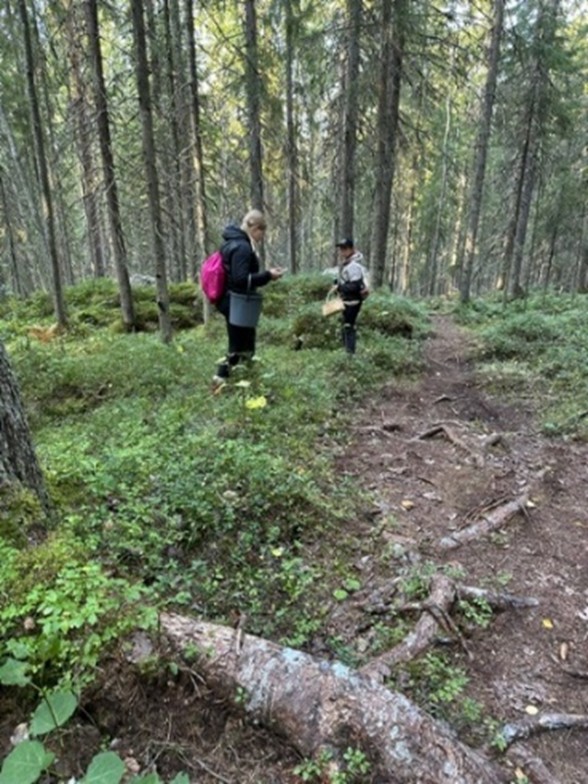
Work requires more and more capability and skills to continuously learn and process information nowadays. The intensity of workdays causes a various range of cognitively straining factors that have an impact both on work results and workers’ well-being. Repeated interruptions, disruptions like noises and movements, information overload or unspecific instructions cause pressure and stress at work. (Kalakoski and Nikunlaakso 2020.) Similarly, a study by Virtanen (2021, 12-13) tells that the most common symptoms of overload are cognitive challenges and a variety of somatic and physical symptoms. The manager should encourage employees to take breaks to avoid these symptoms. But how can the manager support recovery during work days?
When the pace of work life picks up there is less space and time for recovery. It is clear that without enough time and support the ability to recover weakens and fatigue creeps in. But how can we avoid that? In this, the role of the manager is worth its weight in gold. They have the responsibility and opportunity to create an environment where employees can recover, relax and recharge.
Today’s working life is busy. There are a lot of different requirements and constant movement – both physical and mental. In the age of technology and flow of information workdays can get long. It can be hard to leave work to the workplace when work e-mails might be on the same phone we use in our free time.
Enable recovery
Recovery from work should be actively managed. The role of the manager is to support the employees in managing the workload, prioritising and pausing work. The example of the manager in terms of time management and their own well-being creates a basis for the whole work community to feel that they are a part of a workplace in which recovery is invested in. This way, the manager is not only a leader, but also an enabler that activates and supports the practices of recovery, creating a community where well-being and work ability are valued. (Laitinen et al. 2024).
A public sector well-being study conducted by Keva in 2024 highlighted the fact that the activities of a manager have a significant impact on employees’ well-being at work. Employees who felt that the activities of the manager were fair and who received support often experienced more enthusiasm and joy in their work. Employees who received support also estimated that they had recovered better from the strain of work and believed that they had better resources to face changes at work. On the other hand, employees who did not receive support or fairness from their manager felt that the joy of work, recovery and their own resources were weaker. (Pekkarinen, Korhonen & Erkkilä 2025, 29-30.)
According to a study organised by Finnish Institute of Occupational Health, organisations are in a clear need to improve cognitive ergonomics at workplaces. Results show that supporting well-being at work by doing even minor concrete changes can have valuable effects both on recovery from work and work effectiveness. (Kalakoski & Nikunkoski 2020).
Practical ideas
Organising. One way a manager can support recovering from work is to have clear guidelines. For example, when and how meetings are scheduled, where information is shared and how and when it is appropriate to send messages (not in the evenings or days-off). Technology plays a part in cognitive stress, but it can be turned into a resource. Work can be organised by using notes, shutting off notifications and putting some non-disruption-time in a calendar. And last but not least, office space should be made as cosy and functional as possible.
Active microbreaks. Taking an active microbreak during work might be hard as it might seem that productivity would be worse with breaking up work. But it is far better for both employees and employers to take and encourage taking microbreaks for the productivity and well-being of the workplace. It is also a sign of good management to encourage and remind workers to break up their work and take breaks as it has great potential to lessen sick leave days and promote the well-being both physically and mentally for the workers. As Radwan et. al. (2021) suggest taking a microbreak of 2 to 3 minutes for every 30 minutes of sitting for the majority of workers.
Humour. In a research among health care workers, it was proven that humour eases stress-based emotions such as hurry, shift work and changes during work (Vesa 2009, 127). In mentally demanding work humour is a major resource for recovering at work. After difficult situations at work it’s easier to face them and continue to work after laughing. The more demanding situation is to face, the blacker the humour is. But black, even sarcastic humour needs workmates who know each other well and who understand the context of the reaction. The research of Vesa (2009, 64) points out that humour varies from occasion, person and context. After all, the manager can’t tell employees to laugh but can promote a permissive atmosphere in workplaces.
Managing is the key
Recovery during workdays is as important as it is to recover during free time. Studies show that the same ways that support recovery during free time do also work when done while at work. Some of these are physical activities and taking distance to work. (Kinnunen 2024).
It is possible to organise work and the work environment that can ease recovering from work. It has a strong impact on well-being at work if the organisation and management have arrangements and conditions that support well-being and recovery.
In a research lead by Kalakoski (2022) it was shown that many of the stress factors at work are not worker related which makes it extremely important that leadership and managers take necessary actions to reduce these factors. Workers and the work community are important in creating possibilities to recover, but managers are the key in creating and sustaining work well-being culture. The manager’s attitude towards recovery and coping at work is reflected positively in the whole work community. Enabling recovery at work starts with the management.
Useful links:
https://www.ttl.fi/teemat/tyohyvinvointi-ja-tyokyky/elintavat/terveytta-tyopaikoille-suositukset
Writers
Kati Holmström, Sanna Laukkanen, Kristiina Läntinen, Kati Säkkinen and Arttu Tennberg. Students at Savonia University of Applied Sciences.
Pirjo Pehkonen, Juha Peteri and Sanna Savela. Lecturers at Savonia University of Applied Sciences.
Sources
ChatGPT 2025. OpenAI GPT-4o. Accessed to create a picture, April 2025. https://chat.openai.com/.
Microsoft 365 Copilot 2025. Accessed to create a picture, April 2025. https://www.microsoft365.com/chat/.
Kalakoski, V. & Lahti, H. (toim.) 2022. Viisi avausta aivotyöhön – Viisikko. Tutkimushankkeen loppuraportti. Työterveyslaitos. https://urn.fi/URN:ISBN:978-952-391-044-7. Accessed 24.3.2025
Kalakoski, V. & Nikunlaakso, R. (toim.). 2020. SujuKE – Sujuvuutta työhön kognitiivisella ergonomialla. Interventiotutkimuksen loppuraportti. Työterveyslaitos. https://urn.fi/URN:ISBN:9789522618955. Accessed 25.2.2025
Kinnunen, U. 2024. Palautuminen työstä vapaa-ajalla ja tauoilla: toimintojen ja psykologisten kokemusten merkitys. https://journal.fi/psy/article/view/141126/100671?acceptCookies=1. Accessed 21.2.2025
Laitinen, J., Selander, K., Hannonen, H., Korkiakangas, E., Lahti, H., Nevanperä, N., Nikunlaakso, R., Reuna, K. & Tienhaara, A. 2024. Johda palautumista kriisissä. Työterveyslaitos. https://www.julkari.fi/bitstream/handle/10024/149382/TTL_978-952-391-174-1.pdf?sequence=5&isAllowed=y. Accessed 14.2.2025
Pekkarinen, L., Korhonen, M. & Erkkilä, T. 2025. Julkisen alan työhyvinvointi 2024. Kevan tutkimuksia 2/2025. https://www.keva.fi/globalassets/2-tiedostot/ta-tiedostot/esitteet-ja-julkaisut/kevan-tutkimus-julkisen-alan-tyohyvinvointi-vuonna-2024.pdf. Accessed 27.2.2025
Radwan, A., Barnes, L., DeResh, R., Englund, C., & Gribanoff, S. (2022). Effects of active microbreaks on the physical and mental well-being of office workers: A systematic review. Cogent Engineering, 9(1). https://doi.org/10.1080/23311916.2022.2026206. Accessed 24.2.2025
Vesa, P. 2009. Aineistolähtöinen teoria hyvää oloa ja työhyvinvointia edistävästä huumorista hoitajien keskinäisessä vuorovaikutuksessa. E-kirja, Tampere: Tampereen yliopistopaino Oy. https://trepo.tuni.fi/bitstream/handle/10024/66537/978-951-44-7895-6.pdf?sequence=1. Accessed 23.2.2025
Virtanen, A. 2021. Psykologinen palautuminen. Jyväskylä: Tuuma-kustannus.
















